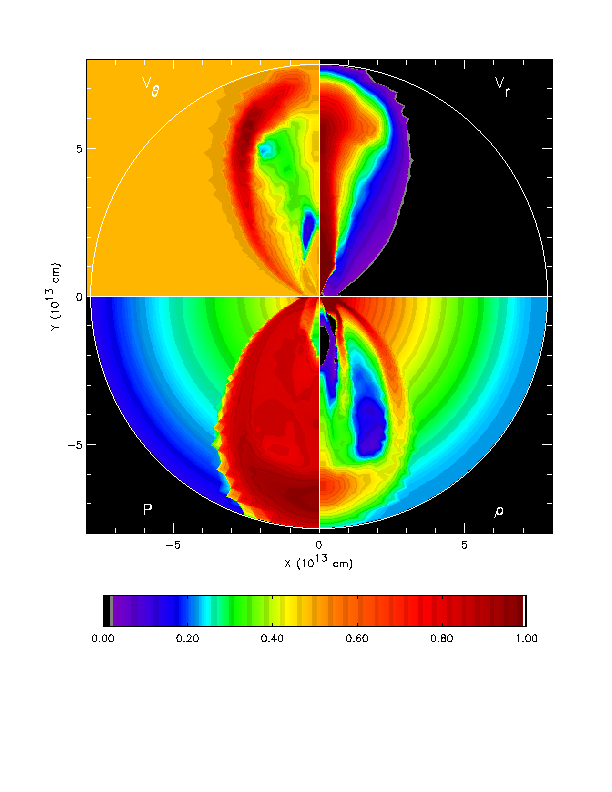Jet-powered explosion of a red supergiant
Download figure: Gzipped Postscript (75KB), PDF (88KB)

Download figure: Gzipped Postscript (75KB), PDF (88KB)

The structure of Model J32 as the jet nears the surface 7820 seconds after core collapse. The total explosion energy at this time is 4.1 x 1051 ergs at this time, close to the final value. The theta velocity, radial velocity and logarithms of density and pressure are given with the minimum and maximum values for vtheta are -1.5 X 109 and 1.5 X 109, for radial velocity, vr -6.7 X 107 and 1.0 X 1010, for density, log density, -9 and -6.8, and for pressure, log P, 2.5 and 10.9, all in cgs units. The colors indicate the interpolation scale between minimum and maximum. Positive vtheta is motion away from the polar axis (theta = 0) along an arc of constant radius. The vtheta plot shows the expansion of the high pressure bubble blown by the jet sweeping around the star (red region) but also an inner region of collimation (blue, purple, and green). At r = 7 X 1013 cm the x-component of the velocity of the expansion shock is vx = 2.0 X 109 cm/s (compared to a sound speed of only 3 X 106 cm/s), while the y-component is vy = 9.6 X 109 cm/s resulting in an aspect ratio for the bubble between 0.2 and 0.3. The velocity and pressure plots show a collimation of the jet flow near 1013 cm, well into the hydrogen envelope of the star, and evacuation of a low density column by the jet. Not however, the plug of high density material being shoved along by the jet.being shoved along by the jet.